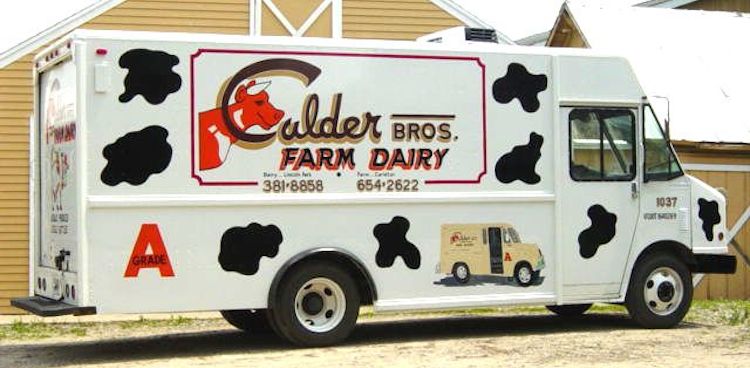
Dairy lovers, take note. That’s no rooster dis- turbing your pre-dawn dreams. It’s a milkman. He’s back.
If you’re a Baby Boomer, you probably had a milkman long ago. If you’re a Gen-Xer or Millennial, you may not know a milk chute from a milk shake—but you’ve probably patronized a food truck and understand the appeal of mobile vendors. Today’s milkman— or woman—is simultaneously retro and modern, providing old-fashioned, face-to-face delivery in an age in which fresh and utterly personal foods are back in style.
Milkmen were common across the United States in the mid-20th century. In those days, everything from dairy to dry cleaning showed up at the door. Refrigerators were small, so milkmen often delivered more than once a week. Typically, stay-at-home moms were there to receive the goods. But as refrigeration improved and more women joined the workforce, milk was increasingly store-bought. In some parts of the country, milkmen disappeared altogether.
Fast-forward to this century. Young consumers who demand quality and convenience are turning back to the milkman. And they’re willing to bear an additional cost—whether it’s a flat fee per delivery or a slight upcharge on milk (although sometimes the price is lower than retail for hormone-free or organic products).
No one tracks exactly how many milkmen roll today, but they’re out there from coast to coast. Smith Brothers Farms, which no longer maintains cows, but has delivered milk in the Kent, Washington, area since 1920, runs 50 routes per week, serving 40,000 customers. Lincoln Park, Michigan-based Calder Dairy gets the goods to 2,000 customers on 21 routes. South Mountain Creamery in Maryland racks up more than 8,000 deliveries in four states.
The popularity of milk delivery today is partly due to nostalgia, says food historian and George Mason University associate professor Gabriella Petrick, “even if it’s nostalgia for something imagined. Having milk delivered somehow feels like you’re closer to the farm. Having a person who brings you milk gives a sense that there’s something better about it. It becomes personal food.”
Over time, milkmen may again seem like constants in customers’ lives. In some cases (and with customers’ permission), they let themselves in to stock the family fridge. They see their customers in their bathrobes, and make friends with family pets (Smith Brothers milkmen hand out 17,000 dog treats monthly).
“We delivered during Hurricane Sandy when everything else closed,” says Frank Acosta, co-founder of Manhattan Milk. “Everyone was so appreciative.”
As it happens, home delivery requires that milkmen also be musclemen. “A case of milk weighs about 45 pounds,” says Annie Calder, general manager of Calder Dairy. “Drivers come in at 5 a.m., load their trucks, deliver to 100 stops, then come back in the afternoon and unload.”
Smith Brothers’ Gina Shields loads her truck at 1:30 a.m., with crates holding nine half-gallon milk cartons (each weighing four pounds), plus eggs, bread, cheese (including three varieties of Beecher’s Handmade Cheese), and other goods. “There are days when I’m in and out of the truck 150 times,” says Shields, one of Smith Brothers’ two milkwomen.
“We carry milk up a good number of stairs,” says Manhattan Milk’s Acosta. “The average building is five to 10 flights and we average five of those buildings per day, so [up] to 100 flights just climbing. That’s how we stay in shape.”
But Acosta doesn’t mind the workout, nor does he mind schlepping milk bottles throughout Manhattan and Brooklyn in the wee hours. He grew up in Bloomfield Hills, Michigan, and though he has no memories of early-morning visits from the milkman, he’s proud to create them for his customers.
“People like having milk outside their door,” Acosta says. “They want it there when they wake up.”



